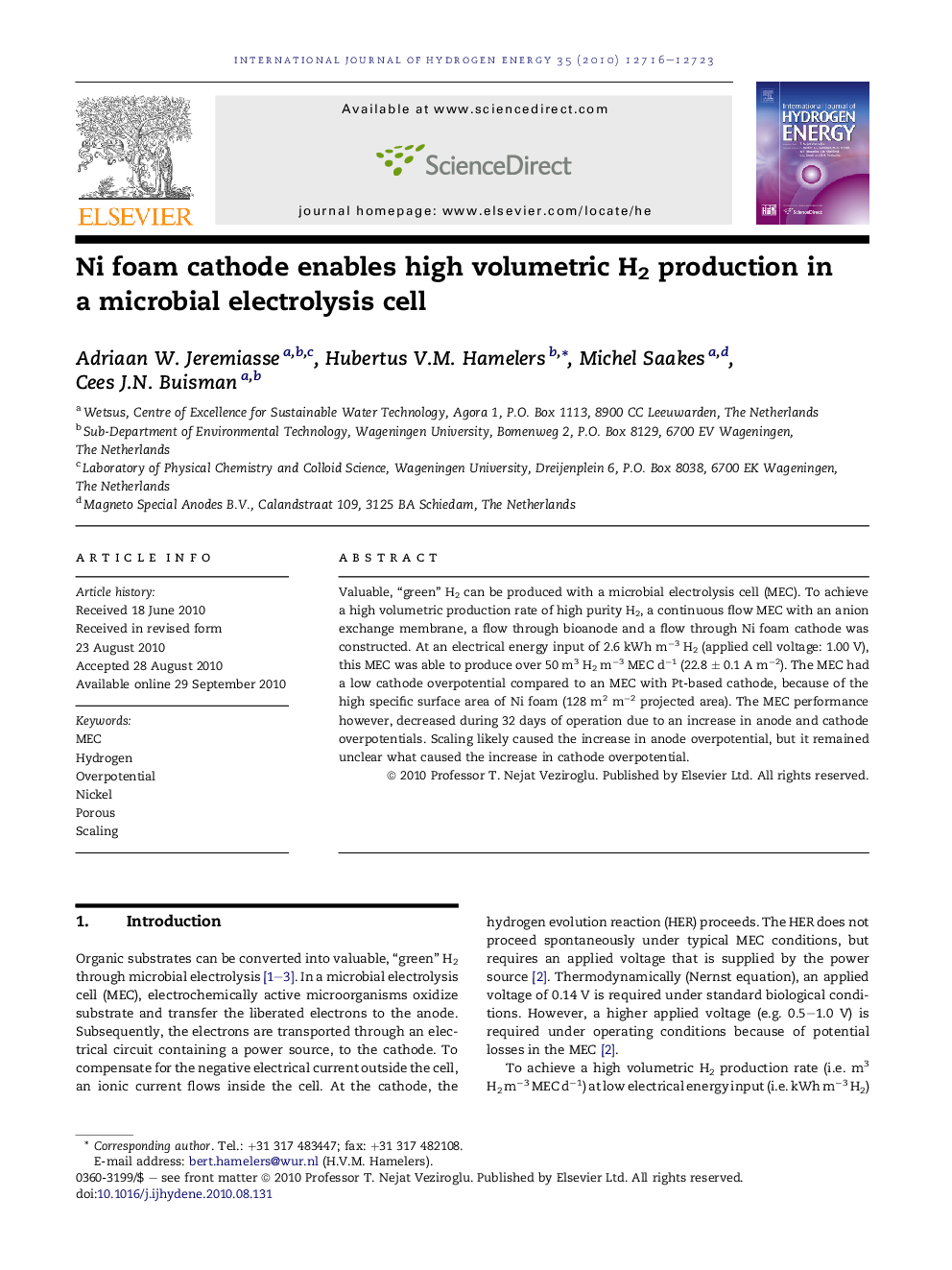| Article ID | Journal | Published Year | Pages | File Type |
|---|---|---|---|---|
| 1279912 | International Journal of Hydrogen Energy | 2010 | 8 Pages |
Valuable, “green” H2 can be produced with a microbial electrolysis cell (MEC). To achieve a high volumetric production rate of high purity H2, a continuous flow MEC with an anion exchange membrane, a flow through bioanode and a flow through Ni foam cathode was constructed. At an electrical energy input of 2.6 kWh m−3 H2 (applied cell voltage: 1.00 V), this MEC was able to produce over 50 m3 H2 m−3 MEC d−1 (22.8 ± 0.1 A m−2). The MEC had a low cathode overpotential compared to an MEC with Pt-based cathode, because of the high specific surface area of Ni foam (128 m2 m−2 projected area). The MEC performance however, decreased during 32 days of operation due to an increase in anode and cathode overpotentials. Scaling likely caused the increase in anode overpotential, but it remained unclear what caused the increase in cathode overpotential.
